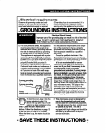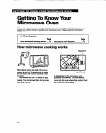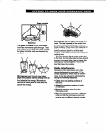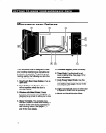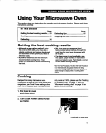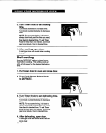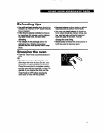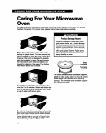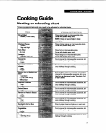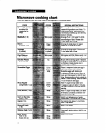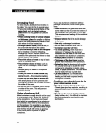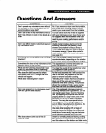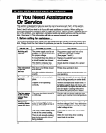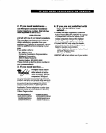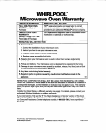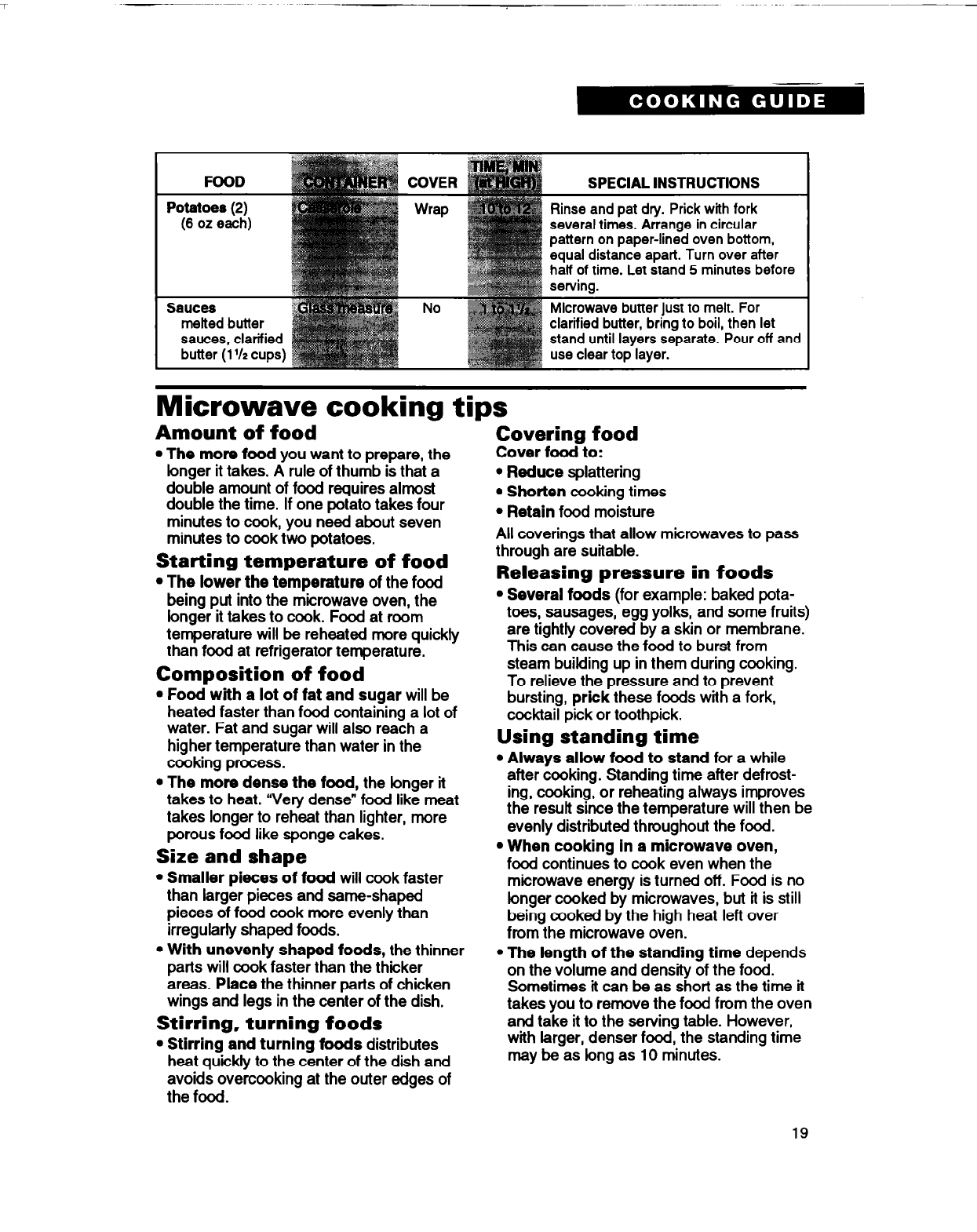
FOOD
Potatoes (2)
(6 oz each)
Sauces
melted butler
sauces, clarified
butter (1
l/2
cups)
COVER
Wrap
No
SPECIAL INSTRUCTIONS
Rinse and pat dry. Prick with fork
several times. Arrange in circular
pattern on paper-lined oven bottom,
equal distance apart. Turn over after
half of time. Let stand 5 minutes before
serving.
Microwave butter just to melt. For
clarified butter, bring to boil,
then let
stand until layers separate.
Pour off and
use
clear top layer.
Microwave cooking tips
Amount of food
l
The
more
food
you want to prepare, the
longer it takes. A rule of thumb is that a
double amount of food requires almost
double the time. If one potato takes four
minutes to cook, you need about seven
minutes to cook two potatoes.
Starting temperature of food
l
The lower the temperature
of the food
being put into the microwave oven, the
longer it takes to cook. Food at room
temperature will be reheated more quickly
than food at refrigerator temperature.
Composition of food
l
Food with a lot of fat and sugar
will be
heated faster than food containing a lot of
water. Fat and sugar will also reach a
higher temperature than water in the
cooking process.
l
The
more dense the food,
the longer it
takes to heat. “Very dense” food like meat
takes longer to reheat than lighter, more
porous food like sponge cakes.
Size and shape
l
Smaller pieces of food
will cook faster
than larger pieces and same-shaped
pieces of food cook more evenly than
irregularly shaped foods.
l
With unevenly shaped foods,
the thinner
parts will cook faster than the thicker
areas.
Place
the thinner parts of chicken
wings and legs in the center of the dish.
Stirring, turning foods
l
Stirring and turning
foods distributes
heat quickly to the center of the dish and
avoids overcooking
at the
outer edges of
the food.
Covering food
Cover food to:
l
Reduce
splattering
l
Shorten
cooking times
l
Retain
food moisture
All coverings that allow microwaves to pass
through are suitable.
Releasing pressure in foods
l
Several foods
(for example: baked pota-
toes, sausages, egg yolks, and some fruits)
are tightly covered by a skin or membrane.
This can cause the food to burst from
steam building up in them during cooking.
To relieve the pressure and to prevent
bursting,
prick
these foods with a fork,
cocktail pick or toothpick.
Using standing time
l
Always allow food to stand
for a while
after cooking. Standing time after defrost-
ing, cooking, or reheating always improves
the result since the temperature will then be
evenly distributed throughout the food.
l
When cooking in a microwave oven,
food continues to cook even when the
microwave energy is turned off. Food is no
longer cooked by microwaves, but it is still
being cooked by the high heat left over
from the microwave oven.
l
The length of the standing time
depends
on the volume and density of the food.
Sometimes it can be as short as the time it
takes you to remove the food from the oven
and take it to the serving table. However,
with larger, denser food, the standing time
may be as long as 10 minutes.
19



